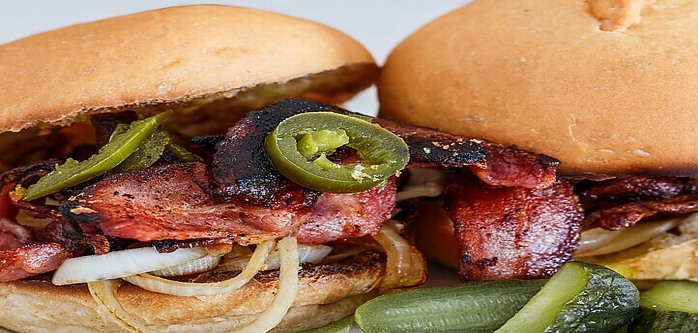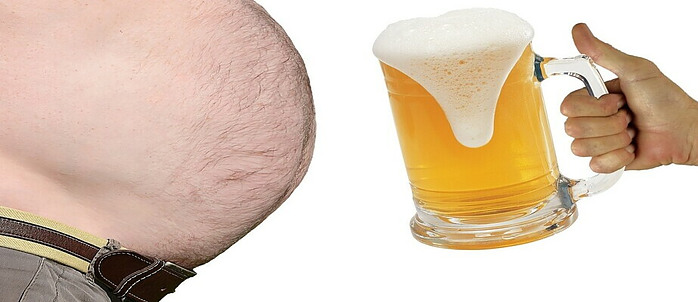Have you ever wondered if certain foods are to blame for that stubborn belly fat? Guess what? They are. I’m going to guide you through some of the fundamental aspects of how your diet influences the accumulation of fat around your midsection. It’s not just about cutting calories; it’s also about the types of foods you choose and their impact on your body’s fat storage.
This isn’t just about looking good in a swimsuit or fitting into a slim pair of jeans. Targeting belly fat is crucial because of its association with serious health risks, such as cardiovascular disease and type 2 diabetes. That’s why understanding the impact of specific foods on your body is about more than superficial appearance; it’s a health priority.
 Some foods have a notorious reputation for causing bloating and encouraging fat storage, especially in the abdominal area. You’re going to find out about these foods in detail. From excess sugars that your body may convert to fat to certain fats themselves that can be harmful, I’m here to help you navigate through the dietary decisions that could make or break your flat stomach goals.
Some foods have a notorious reputation for causing bloating and encouraging fat storage, especially in the abdominal area. You’re going to find out about these foods in detail. From excess sugars that your body may convert to fat to certain fats themselves that can be harmful, I’m here to help you navigate through the dietary decisions that could make or break your flat stomach goals.
Foods That Inflate Your Waistline
You’re going to find out about some key offenders when it comes to belly fat. And we’re starting with the sweet stuff: foods and drinks high in sugar. Excess sugar, especially from sugary drinks like sodas, can lead to an increase in overall body fat, especially around your midsection. When you consume more sugar than your body needs, it’s converted into fat, and unfortunately, the belly tends to be a prime storage spot.

Next up, trans fats are something you’ll want to steer clear of. Often found in processed foods, baked goods, and some margarines, trans fats are notorious for contributing to belly fat. If you check the ingredients and see ‘partially hydrogenated oils,’ that’s a huge red flag.
Carbohydrates are essential, but not all carbs are created equal. Simple carbs, like those in white bread and pastries, cause insulin levels to spike and drop, which can lead to hunger spikes and increased fat storage around the stomach. Conversely, complex carbs found in vegetables, whole grains, and legumes can help you maintain a stable blood sugar level and keep you full longer.
Lastly, don’t overlook alcohol. While the occasional drink may not cause harm, excessive consumption can. Alcohol can contribute to an increase in belly fat, a phenomenon often referred to as the ‘beer belly.’ It’s not just beer though; any type of excessive alcohol intake can have this effect, especially when mixed with sugary beverages.
Sneaky Saboteurs: Lesser-Known Foods to Keep Off Your Plate
You might think that choosing so-called ‘healthy’ foods is a step in the right direction, but they can sometimes do more harm than good. Take granola for instance, it often comes packed with sugar and unhealthy fats, which isn’t ideal for someone aiming for a flat stomach.
Foods high in sodium are another group that’s easy to overlook. While they may not necessarily lead to fat gain, they can cause significant bloating. That can of soup or those ‘light’ snacks might not be helping your cause as much as you’ve been led to believe.
Now, let’s talk about diet sodas and artificial sweeteners. You might opt for these as a calorie-saving measure, but guess what? They are linked to increased sugar cravings and appetite, which could lead to overeating. Moreover, some studies have suggested that artificial sweeteners may disrupt the balance of your gut flora, contributing to weight gain.
Remember, it’s not just about the calories in these stealthy saboteurs; it’s also about the long-term effects they can have on your eating habits and digestive health. So next time, you might want to think twice before adding them to your cart.
Implementing Knowledge into Action: Strategic Eating for a Flatter Stomach
You’ve learned about the various foods to steer clear of if you’re aiming for a flatter stomach. Now, it’s time to take this knowledge and translate it into daily habits. Choosing the right foods is a start, but the approach you take towards eating plays a key role as well.
Developing a personalized meal plan is your first step. This isn’t about restricting yourself brutally, but about making better choices more often. Start by replacing those belly-inflating foods with healthier alternatives that you actually enjoy. Experiment with flavors and cuisines to keep it interesting.
Remember, portion control is just as crucial as the type of food you’re eating. Overeating healthy foods can still lead to weight gain. Consider using smaller plates, and listen to your body’s hunger and fullness signals. Slow down your eating; it takes time for your brain to register that you’re full.
Timing can also make a difference. Having smaller, balanced meals throughout the day can prevent the intense hunger that often leads to overeating. And don’t forget hydration; sometimes, we mistake thirst for hunger.
Lastly, while food is fundamental, it’s not the sole factor in achieving a flat stomach. Regular physical activity burns calories and strengthens your core muscles, further aiding in flattening your belly. Plus, getting enough sleep and managing stress are known to help regulate the hormones that control hunger and fat storage.  Every journey consists of a series of steps, and your path to a flatter stomach is no exception. Adjust your approach as needed, but don’t demand perfection from yourself. Remember, progress over perfection is the goal. I really hope that this guide has provided you with a strong foundation to build upon.
Every journey consists of a series of steps, and your path to a flatter stomach is no exception. Adjust your approach as needed, but don’t demand perfection from yourself. Remember, progress over perfection is the goal. I really hope that this guide has provided you with a strong foundation to build upon.
Thank you for going through my article. Kindly drop your comments, questions, and concerns on the comment section. Be on the look out for my next blog, and remember, ‘Health is Wealth.‘
Stay healthy and remain blessed. Shalom.

I have had the pleasure of reading your review of what foods to avoid for a flat stomach. Like most folks I suppose, I assumed that people wanted to lose belly fat to improve their appearance. I had no idea that it was correlated with cardiovascular disease and Type2 diabetes so I thank you for sharing that information with us.
You have done a nice job of listing the foods to avoid but what most impressed me is your listing of the strategies that can help, such as a personalized meal plan. Making better choices more often is, as you have suggested, an approach that is more palatable than restricting one’s self in a brutal fashion. That is an approach that most people would not be able to successfully navigate and would tend to undermine long-term success. I can also see that portion control is likely a highly successful strategy which, over time, can make a big difference.
Exercise is, of course, important but I did not realize that getting enough sleep and managing stress are known to help regulate the hormones that control hunger and fat storage! Interesting points. Finally, yes Rome wasn’t built in a day so, like anything else in life is a series of steps as you have pointed out. I enjoyed your content and the advice is most appreciated.
Grant R
Thank you so much for your comment Grant. I’m happy you were able to gain one or two things from this article. Highly appreciated!
Your post on foods to avoid for a flat stomach provides valuable insights into healthy eating. I appreciate the emphasis on reducing processed foods and sugars. Have you found any effective substitutes for sugary snacks in your own journey? Personally, I’ve switched to fruits and nuts, and it’s made a noticeable difference.
I also resonate with your point about staying hydrated. Water intake can indeed impact bloating. Do you have any favorite hydrating recipes or tips to make drinking water more enjoyable? I find adding a slice of citrus or a splash of herbal tea does wonders. Thanks for sharing these tips – it’s a great reminder to make mindful choices for a healthier lifestyle!
Thank you Pasindu for reading my article. I am happy you found it interesting. It takes a lot of discipline and total resilience to move away from what one has been used to for years. Like you did, I replaced those sugary snacks with fruits and nuts. I always carefully read the nutritional facts on any snacks before purchase, making sure the sugar and saturated fat contained in them will not impact my health negatively. I try as much as possible to eat an apple a day whenever I’m craving sugary snacks, especially crunchy ones:) For water, I enjoy drinking it warm instead of cold, then sometimes add like one teaspoon of lime.
Thanks once again, and stay healthy.
Hi! I truly enjoyed reading this. Some of the foods you mention, like sugary drinks and bread are definitely foods that I indulge in. I truly need to be more intentional about this. Thank you so much for sharing this! It was very helpful!
Thank you so much Ireti for creating time to read my article, and I am very happy you enjoyed doing so. There is a saying that ‘You are what you eat.’ It worth being mindful of what we feed our system with. To be healthy and remain fit, we need to abstain from some foods that can impact our health negatively. Once again, I really appreciate your time and comment on this article.
Stay healthy and remain blessed.